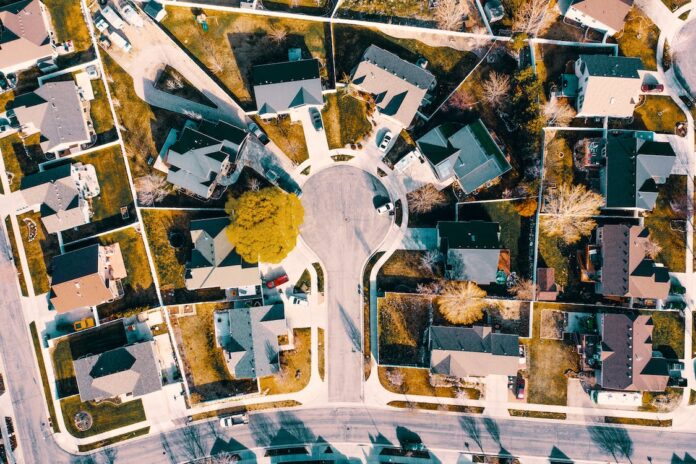
By
There are many ways to build wealth, but homeownership is among the most powerful for creating and maintaining generational wealth and uplifting communities. Plus, there’s the perk of decorating a home as you wish.
As the current housing market shows, a home’s value can grow substantially over time.
In the last three years, the national median home sales price increased by over $107,800. At the end of March 2023, the median sales price nationally was $426,800, up from $329,000 in March 2020, according to the Federal Reserve Bank of St. Louis.
Home prices increased in a short period, and so has the overall homeownership rate for Black people. The rate for Black people increased to 45.8% in March 2023 from 44% in March 2020.
However, the Black community’s homeownership rate has never been above 50% and currently lags 5% behind the nearest group.
The rates so far this year are 50.6% for Hispanic Americans, 62.8% for Asian Americans, and 72.7% for White Americans, according to the National Association of Realtors.
Despite these numbers, Black folks still have their eyes on the prize.
A new survey from Citi Retail Bank and YouGov found 42% of Black people hope and plan to purchase a home one day, and 16% are actively looking to purchase their first home. Another 16% say they already purchased one.
“We’ve been telling people to get ready now,” Donnell Williams, president of the Black Real Estate Professionals Alliance, told Word In Black. “You don’t have time to wait. Be ready for when it comes.”
What’s holding them back? Respondents say current housing prices and high interest rates are the most significant barriers to entry.
Racism Is at Fault for the Lack of Homeownership
Other than the current economic and housing market situation, the Black community’s history with homeownership has long been a barrier.
The FHA prohibited Black families from purchasing homes well into the 1960s. The passing of the Fair Housing Act in 1968 finally opened the door for them to participate in ownership and the benefits of equity and wealth.
The median sales price for homes at the end of 1968 was $25,600. Today, when adjusted for inflation, that’s equivalent to $224,379. However, prices have far outpaced inflation since 1970.
Government maps outlined areas where Black residents lived, deeming them too risky for insuring mortgages. And segregation through redlining — a common practice of the past — continues to haunt these communities nationwide.
“When I look at why we lag behind when it comes to homeownership, from a historical perspective, we got to the game late,” says Derrick Nutall, vice president of Citi Mortgage’s community lending team.
In the present, he says mindset is a significant barrier for Black folks looking to get started on the path.
“Often, because of that [history], we don’t want to dive into something. We’re overly careful, so to speak, and we overanalyze our situations, which oftentimes leads to a further delay in us accomplishing the goal — which is homeownership.”
DERRICK NUTALL, VICE PRESIDENT OF CITI MORTGAGE’S COMMUNITY LENDING TEAM
Homeownership is a lot like investing. The harms of the past by the government, banks, realtors, and anyone involved in the process causes a natural distrust.
Moving From Hope to a Plan
Williams says, in addition to the history, there’s a lack of Black loan officers or loan officers who understand these problems enough to assist potential Black homebuyers.
Trust is enormous for the Black community. Black respondents in the Citi survey said speaking with a realtor or friends and family who’ve purchased a home could help them feel more knowledgeable or prepared to buy a home.
“Yes, there have been systemic challenges that have prevented us from really taking advantage of the American dream as it’s been put out there. But currently, what I see as the biggest challenge is really just putting your foot forward to take that first step, which is finding out where we stand in the process.”
DERRICK NUTALL, VICE PRESIDENT OF CITI MORTGAGE’S COMMUNITY LENDING TEAM
To save up for a down payment, Black folks make meals at home more often, take on a second job or work overtime, avoid online shopping, and cut back on memberships and subscriptions.
On the federal level, the Biden administration made several changes to existing federal programs designed to make homeownership accessible, including a reduction for FHA-insured mortgages.
The administration’s fiscal budget also included $10 billion to launch a first-generation down payment assistance program for first-time buyers whose parents have never owned a home and are at or below their area’s median income.
Proving there’s hope — and a plan — 51% of Black survey respondents say they are currently saving for a down payment, and a majority believe they can purchase a home in the next three years or more.
“Developing a plan is simple,” Nutall says. “Implementing it can be challenging, but if you’re committed to it, you can continue forward and accomplish it.”



